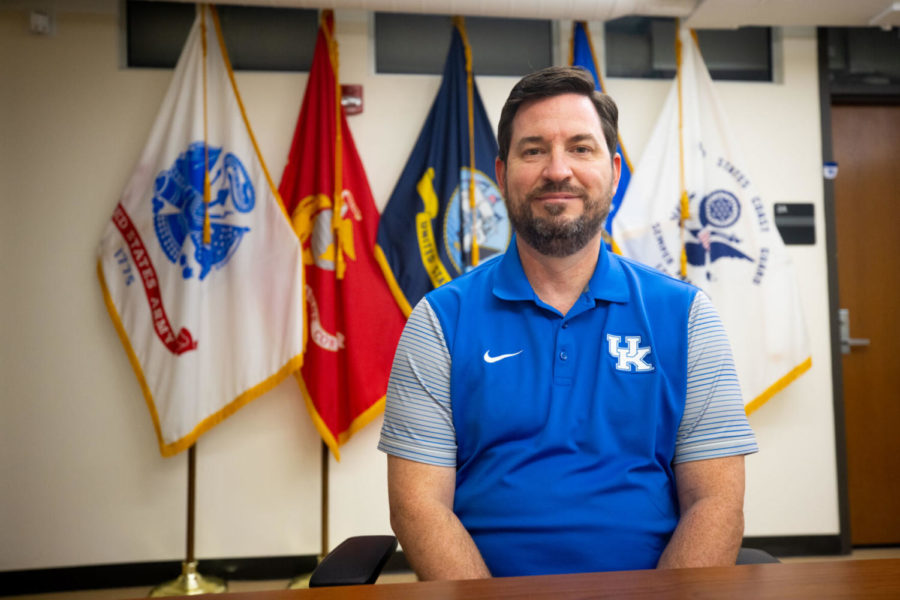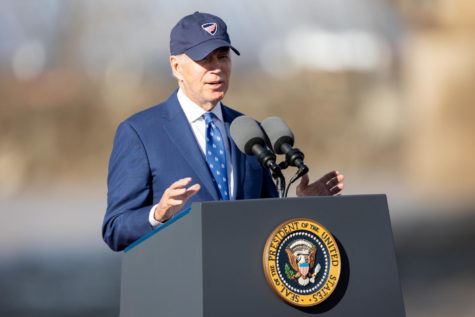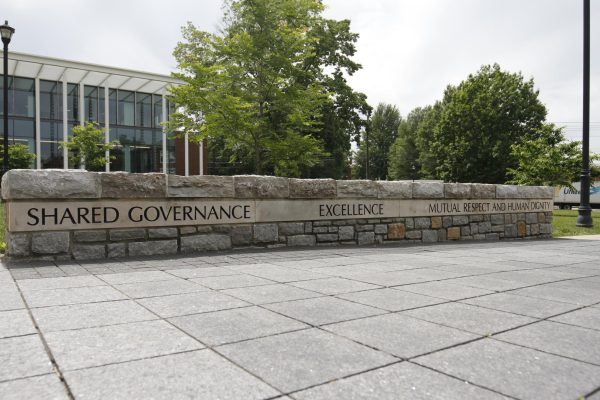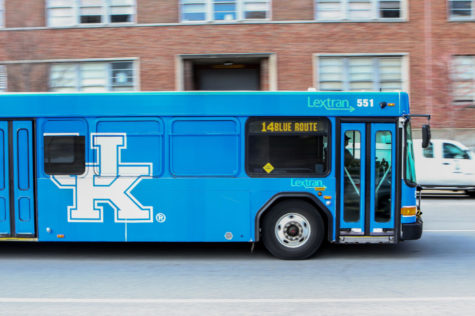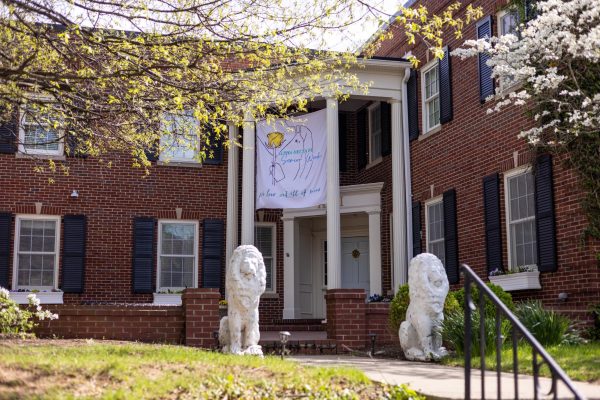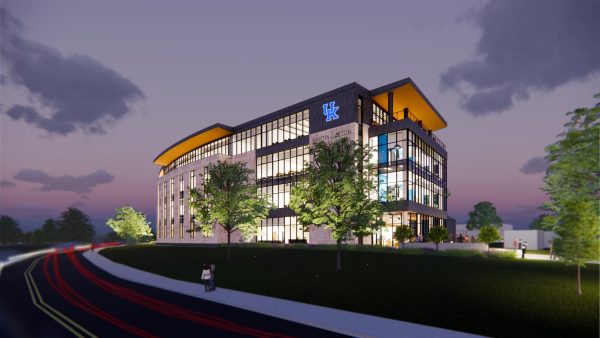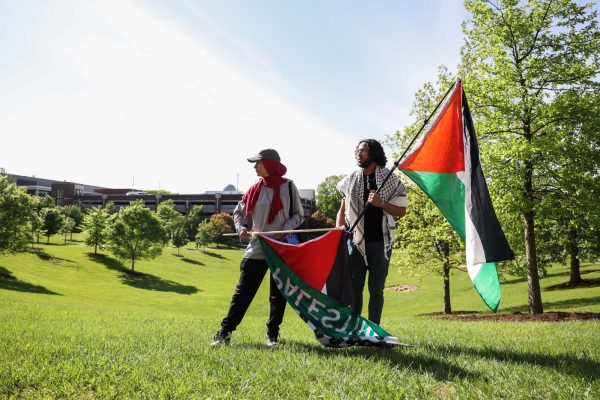‘At the tip of the spear’: One veteran’s experience with the aftermath of 9/11
September 9, 2021
The aircraft is perched on the edge of the ship, secured in the catapult shuttle, a short runway track ahead of it. Daniel Lane’s aviation mechanic team walks around the aircraft, double checking for leaks, popped open panels, locked wings and anything else that could possibly go wrong.
There is no room for error. A normal aircraft, on shore, requires several thousand feet of runway just to get airborne. The naval aircraft has 300 feet until there’s nothing but ocean below.
The pilot revs the engines to full power, taking the control stick to all four corners to make sure everything is moving properly. Lane and his team perform a final check. Right now, the 40,000-pound aircraft is sitting dead, inactive. But in just under 2.5 seconds, it will have shot off the front of the ship, reaching a supersonic speed of 140 knots, 161 miles per hour.
It’s a feat of physics that seems miraculous, too good to be true. On a naval aircraft ship, though, it happens on a daily basis. And that’s the easy part. Landing is harder, because pilots must aim to place their aircraft’s tailhook in a three-foot square box, flying over 170 miles per hour.
As the catapult does its job, the aircraft races past Lane at near-full speed, 60 feet away at most. It’s straight out of a young Lane’s dream. Heck, it’s a dream for full-grown Lane too.
When he heard that America had been attacked the morning of Sept. 11, 2001, a half-asleep Lane thought that was a dream, too. He came to his senses just in time to watch the second tower fall on the USS Enterprise’s TV, alongside members of his Navy squadron.
His ship was the first Navy aircraft to respond to the attack, launching the first strikes of the war on terror.
From March 1998 to April 2018, Lane served in the Navy as an aviation maintenance officer. He enlisted right out of high school, leaving for boot camp two days after turning 19. His maternal grandfather and uncle had been in the military, and his dad served as a Naval flight officer. He was around Naval Air stations a lot as he grew up, which instilled in him a love for aviation and aircraft.
As an aviation machinist’s mate, Lane was part of a team of jet engine mechanics that ensured that the Navy’s aircraft were functioning at the high levels necessary to successfully train, complete missions and provide combat air cover for the boots on the ground.
After basic training, Lane lived in Sicily for two years, in the shadow of active volcano Mount Etna. He then worked on aircraft in Jacksonville, Florida; Brunswick, Maine; and Norfolk, Virginia. He then transitioned to F/A-18 aircraft from 2007 to 2015, with a stint as a naval instructor teaching new recruits in between.
From January to November 2001, he was deployed on the USS Enterprise. But as the ship sailed away from the Persian Gulf toward Cape Town, South Africa, its original mission complete, the events of 9/11 stopped it dead in its tracks.
As the only aircraft carrier near the Middle East at the time, 100 miles north of the equator, Lane and his team quickly turned around. It was war, and everyone knew it. Training ramped up, the ship prepared munitions and officers awaited the call to launch the first air strikes of the fight.
When the call came one October night, about two weeks after the attack, Lane’s S-3 aircraft was one of the first to launch off the ship, its job to support the strike package against Al-Qaeda.
Lane said he feels a sense of pride about being “at the tip of the spear,” fighting on the frontlines of the war on terror until the USS Enterprise returned to U.S. soil in November 2001.
Now, Lane attends school alongside younger students who don’t remember 9/11 or who weren’t even born yet. Just like in the Navy, with the rare diversity of his career, Lane is once again an anomaly.
Lane is a senior business management major at UK, and he’s often the oldest person in the classroom — professor included. Sometimes, he doesn’t get the lingo his peers and instructors are using. Despite being able to get along with anyone, there’s an obvious disconnect between him and the other students.
The first day of a new semester, Lane knows he is the elephant in every classroom. He doesn’t mind the questions, though. He always informs the class of his military background, and said he’s never been met with anything but respect and a bit of curiosity.
“Obviously I’m at a different point in life than most of my college classmates, and so with that I kind of try, I just keep myself a little reserved and a little pulled back, simply understanding and appreciating the difference of where we’re at,” Lane said. “I also fully understand that the average person that I’m sitting in class beside, I am not going to hang out with on Friday nights.”
His inability to fully connect with his younger classmates doesn’t bother Lane much. He’s been able to cultivate his own social circle through the Veterans Resource Center (VRC), ever since a VRC member gave him a campus tour before his first year at UK even began.
The VRC, located in the basement of Erikson Hall, is a place where UK’s military veterans can hang out, study and feel comfortable around people with similar life experiences. While it’s been mostly empty during COVID times, Lane said that before, it was always busy.
“We’re not necessarily as tight as a lot of traditional students because we have lives and families outside of here, but it definitely developed that kind of network and friendships and everything that is getting me through,” Lane said.
Family was the reason Lane retired from the Navy right after the required 20 years of service. As Lane’s children grew older, leaving for each six-to-nine-month deployment got more and more difficult. He knew he was missing out on key moments of development. While he was on base, Lane’s only communication with his wife and kids was through email; phone calls were expensive, sometimes up to a dollar per minute.
He wasn’t entirely alone, though, what with his almost proxy family on the base. Each squadron had about 200 to 250 people whom Lane said became his extended family of sorts on a ship carrying over 4,000 people, plus a job specialty group of about 18 fellow Navy officers with whom he spent most of his days.
“My wife could say, ‘Hey this is broken at the house,’ and you kind of want to be there to help out with it, but at the same time you’re on a ship halfway across the world,” Lane said. “We have the squadron, but there’s support groups through the squadron for the spouses and the families and everything back home.”
The trust cultivated among Lane’s squadron members through months and years of travelling, training, eating and sleeping together in the surprisingly cramped living quarters would prove vital to the success of missions. Aircraft carriers may be massive, but most of the space is taken up by the aircraft.
The friendships also made exploring the various port stop locales much more enjoyable. While many hours were spent several hundred feet below sea level in a submarine, Lane got to spend time in Athens, Portugal and Portsmouth, England of Europe and Dubai, UAE and Bahrain of the Middle East, among others. Lane said world travel introduced him to many valuable microcosms of community and culture.
“So you grow up in America, and I mean, America is great, I’m never going to say anything less, but it opens your eyes to seeing the other cultures and just kind of understanding different people, different cultures,” Lane said. “I guess it increases the empathy you can have for others and for their situations.”
In 2015, while still fully active duty, Lane began his transition out of the military. He became a Naval recruiter for three years to “demilitarize” himself, he said.
But with one career behind him, Lane wasn’t at all sure what he wanted the rest of his life to look like. With the guidance of his division officer, he decided to pursue an engineering degree at UK — it seemed compatible with his aviation interests and as a Cincinnatian just across the Kentucky border, he’d always bled blue.
He later switched to a business management major — engineering didn’t turn out to be the right fit.
Lane said his experiences at VRC, including a stint in the lead work study position, have made his college experience worthwhile. However, he said he would like to see the university create a space in the student center where there is access to the amenities offered in the VRC, especially with the overwhelming majority of veteran students living off campus.
While he knows and accepts that UK’s primary marketing and branding focus is toward traditional students, Lane said that adult students often get lost in the shuffle.
“While I’m definitely a veteran, I can kind of connect to here [VRC] and build the network here. I’ve been in classes with other adult students that are not necessarily related to the military,” Lane said. “I can see where they don’t necessarily have a veteran center.”
He said he hopes that the VRC is able to expand to capture more of the adult student population in the future.
Lane graduates in May 2022, once again poised to enter the “real world,” this time of business management. He said he hopes his path includes an element of aviation or aircraft, which are still his passions.
“I feel I’m on a path now to where I can leverage everything — all the skills I’ve built through the Navy and coming from junior enlisted and moving up the ranks and kind of taking on more leadership and responsibilities, to now try and do a lateral move as much as possible into the business world and kind of keep that progression going,” Lane said.









































































































































